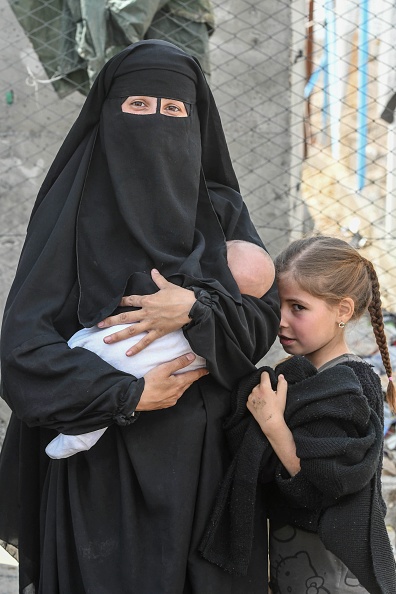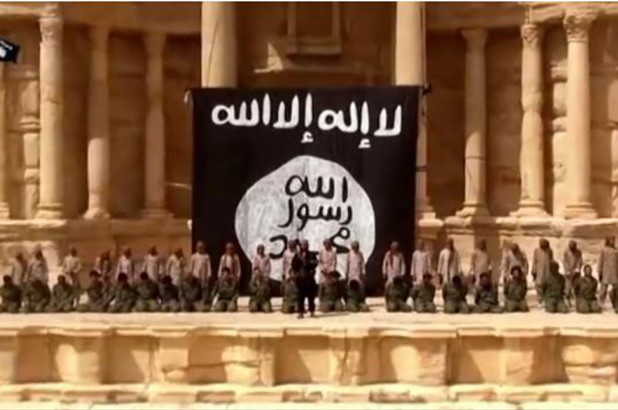Early this year, the Syrian Democratic Forces (SDF) liberated the eastern Syrian city of Baghouz as it defeated IS in its last stronghold. Nevertheless, the aftermath of the liberation has created a humanitarian crisis as an estimated 70,000 people who lived under IS rule are now displaced and living in the Al-Hol camp which is largely run by the International Committee of the Red Cross (ICRC). While it is widely agreed that adult men and women who willingly joined the group should be punished for their actions, there is a crisis with regards to children who joined the group (usually with their parents), were kidnapped by the group, or were born into the group. The controversy came to international light during the Shamima Begum case, in which a young British woman (Begum) joined IS when she was 15 to become a bride in the group. After IS’s defeat, the now adult Begum requested to go back to the UK, moreover she had a newborn boy who would, in theory, be entitled to British citizenship and would have the right to reside in the UK. Experts, policymakers and the general public debated whether or not Begum should be repatriated by the UK, many citing that she would be a threat to security and allowing her to get back would set a risky precedent. There were those who suggested separating her son from her, but doing so would require many legal hurdles. In midst of the debate, Sajid Javid, Britain’s Home Secretary, decided to strip Begum of British citizenship citing the fact that she would be eligible for Bangladeshi citizenship. Nevertheless, the action did not end the debate as thousands of children are still stuck in Al-Hol and the international community has not acted fast enough to find a solution to the growing crisis.
A HUMANITARIAN CRISIS
At 70,000 people, the camp is overcrowded and a reported 10, 000 people are forced to sleep in large communal tents. Children make up 66 percent of the camp’s inhabitants, women are 24 percent of the inhabitants and men make up the remaining 10 percent. Children trapped in Al-Hol face terrible conditions as many of them suffer from diarrhea, dehydration, and malnutrition. A BBC report from April 12, 2019, indicates that 169 children have died so far in the camp, but it’s not just the conditions within the camp that are causing the children to suffer, it is also the route to the camp as estimated 140 people, mostly children, passed away on route to the camp. While speaking to The Independent, Misty Buswell, the IRC’s Middle East advocacy director, stated that many children die on the way to the camp due to malnutrition and hypothermia. The SDF largely lacks the tools to help these children and NGOs such as the ICRC is doing what it can to help the starving and ill children.
A RESPONSIBILITY THAT NO ONE WANTS
According to a report in Rudaw, most of the former IS inhabitants are either Syrian or Iraqi, as they make up 43 percent and 42 percent of the occupants, respectively. Meanwhile, the remaining 15 percent are foreigners who hailed from all over the world as many of them came from Europe, some from Australia and a few from the Americas. Both regional and foreign children face difficulties going home, but for different reasons. Clive Stafford Smith, a human rights lawyer who has worked to return children who lived under IS to their homeland, spoke with Majalla and indicated that both Iraq, which is still under reconstruction, and Syria, which still has fighting factions, both lack the tools to help these children. Moreover, the SDF does not have the means to help the children integrate into normal life; as such he believes that the West has a responsibility to save the children from further suffering. This responsibility, in his opinion, stems not only from Iraq and Syria’s lack of resources but also because Western powers invaded Iraq and created the problem in the first place. Nevertheless, Western states have been largely static during this crisis and seem to ignore any responsibility for the children. Smith would further criticize Western powers for leaving the SDF with this crisis since it fought against IS and was the largest driving force behind IS’s defeat in eastern Syria.

INTERNATIONAL LAW REGARDING CHILD RECRUITS
Panos Moumtzis, the UN’s Humanitarian Coordinator for the Syria Crisis has said that the children should be treated as victims and has called on the international community to help the estimated 2,500 displaced children. While his plea was a moral one, it is backed by international law. Article 39 of the Convention on the Rights of the Child (CRC) indicates that states should take the responsibility to promote the psychological and physical recovery and social reintegration of children who become victims of exploitation, inhuman treatment or armed conflict. Moreover, Article 6 of the Optional Protocol on Children in Armed Conflicts says that state parties should provide children used in armed conflicts with “all appropriate assistance for their physical and psychological recovery and their social reintegration”. While such conventions are clear, most states have taken measured to no steps to aid these children fearing various security risks with the prospect of their repatriation.
TICKING TIME BOMB: WESTERN RESPONSE TO THE CRISIS
Security fears surrounding foreign nationals, children included, has encouraged many Western governments to opt out of repatriating those who lived and fought with IS. Australian Prime Minister Scott Morrison, who as of the writing of this article is contesting in an upcoming federal election, has rejected calls from Save the Children Australia to repatriate children when he said is “not going to put any Australian life at risk to extract people from these conflict zones”. He did go on to say that the government could potentially help the 80 Australian children escape their situation if their parents go seek help from Australian embassies. Meanwhile, the British government refuses to repatriate the estimated 30 British children (and adult citizens) due to security reasons and legal difficulties. While speaking to the Independent, a government spokesperson has cited the fact that the UK does not have consular services in Syria and could not help children residing there for that reason. The spokesperson would go on to say, that if a British child reached a British consulate outside of Syria, then the government would be able to help them. While the Swedish government has had similar responses toward the issue, opposition parliamentary parties have been critical of its government’s slow reaction toward the estimated 60-80 Swedish children. Recently, a man in Sweden has fought to bring back his grandchildren, aged one to eight, from the Al-Hol camp. The children’s father, Michael Skråmo, left Sweden to join IS as a fighter and took his wife and kids with him. The children would eventually become orphans after both their parents were killed. The grandfather’s efforts were fruitful, as SDF authorities handed the orphans to a Swedish delegation in the region and are now set to go back. However, most Western governments are unwilling to risk repatriating children and Giles de Kerchove’s, the EU Counter-Terrorism Coordinator, recent comments on children who lived under IS being a “ticking time bomb” can sum up the sentiments that European governments have over the issue.
HOSTILITY WITHIN FOREIGN PART OF THE CAMP
The residents of the Al-Hol camp are divided as to keep foreign women and children separate from the Iraqi and Syrian women and children. The reason why the SDF did this is due to the fact that foreign women tended to cling on to IS’s barbaric ideology and thoughts. A BBC report indicates that foreign women in the camp are hostile towards SDF soldiers and have resorted to throwing stones and food at them. The report further interviewed a number of these women, many of whom show little signs of remorse over their actions and remain steadfast in their beliefs. It should be noted that the report also had women who were beseeching for a way back home. If a majority of the foreign women within the camp share the same fundamentalist pro-Is sentiments then perhaps Western governments have a point of being wary of repatriating them. Another fear that permeates through governments is the possibility that children who lived under IS for years and were educated with their ideology would have a difficult time reintegrating back into society. When asked about the children who have been indoctrinated and carried out savage acts, Clive Stafford Smith said that those who have been the most exploited by IS are the ones in most need of help and they should not be neglected by Western governments.

RECRUITMENT AND TRAINING
Terrorist groups and armed militias throughout history have used child recruits to carry out their acts of atrocity. The reason for this is two-fold, first young children are vulnerable and can be molded into militants who wholeheartedly believe in the group’s ideology, they can also become desensitized towards violent acts once they are frequently exposed to it. Secondly, few people suspect children to commit acts of terror which enables them to carry out attacks without being detected; this is one of the reasons why so many suicide bombers are children.
A 2017 Foreign Affairs article titled, Inside ISIS’ Dysfunctional Schools, gave a detailed account of how the group recruited children into their educational and training centers. According to the article, the group used its recruitment department the Diwan of Dawah and Masajid (outreach and mosques) to attract children by setting up large screens which showed videos of IS militants battling and training, speeches by Abu Bakr El Baghdadi and even beheadings. The new recruits would be educated in aqidah, or Islamic theology but most other subjects were largely ignored. Furthermore, IS would create its own curriculum which was distributed via PDFs, rather than printed books. In Syria, the group banned all school books that were issued by the Syrian regime but would use teachers who used to work for schools in Syria. These teachers would have to take a two-month “sharia course” before teaching the children who were placed in separate classes based on gender.
The children would further receive intense military training in which they would be trained on how to use AK-47s and behead people. A publication in the 2018 International Institute for Strategic Studies (IISS) Armed Conflict Survey stated that children wouldn’t just be used as pawns of war, but those who were talented orators would be used to recruit both children and adults in the group. The children would be given the title “ashbal”, which is Arabic for cubs, this serves the purpose of giving them a badge of honor within the ranks of IS’s social structure and to indicate that they would one day grow into the “lion warriors” of the “caliphate”.
These cubs would be used extensively in the group’s propaganda material and promotional videos that showed the children commit brutal acts of violence. The group liked making big spectacles that would shock the world but indulge their base. Shortly after capturing the ancient city of Palmyra in 2015 the group would use it as a venue for one of its filmed mass executions. Using a large IS flag as its backdrop, 25 Syrian regime soldiers were lined up to face their fate. Then, 25 IS children dressed in military camouflage came out and proceeded to pull out hand pistols which they used to murder the tied up regime soldiers.
The IISS has stipulated that militant groups, such as those in Uganda, have mostly used child soldiers as shields, in other words, they were meant to be expendable. The same cannot be said for the children recruited by IS as they were clearly be used and trained for the long term, again their intense indoctrination has made governments hesitant towards taking them back into their countries.

REINTEGRATION AND UNDOING THE INDOCTRINATION
If governments decide to repatriate the children, then an intensive plan of social reintegration is necessary for their wellbeing and security of these states. When speaking to Majalla, Clive Stafford Smith emphasized the necessary role of education in the rehabilitation process of these children. Leading policy experts seem to agree with this and many of them further state the need for psychological healing. An article published in the Financial Times said that Ben Wallace, the UK’s Security Minister, had commissioned an NHS Trust to develop a plan on how to deal with the health and social needs of child soldiers if they return to the UK. It should be noted, however, that the minister would go on to say that some young adolescents might be “beyond help”. The Mia Bloom of the IISS agrees with that as she stated that “these children will likely have problems with socialization, lack empathy and suffer from attachment problems, and normalization will be all the more challenging”. Interestingly, Bloom has also conceded that de-radicalization programs that worked with kidnapped child soldiers in Africa might not work with those recruited to IS. One of the said programs involved the Catholic Church uniting children with their families, by contrast, a theological body or framework might not work with IS children since they have a distorted view of Islamic teachings that must be corrected. Moreover, many of these children’s families played a part in their recruitment, while most of the children who were in armed groups in Africa were in fact kidnapped and taken away from their families.
In spite of these difficulties, it is paramount that a solution is found before the situation becomes too complex and too big to solve. A case study published in the Zurich Center of Security Studies (CSS) blog network and the Small Wars Journal, gave a brief comparison of two different methods in which child recruits were reintegrated into society.
For decades, the Colombian government has been at war with Revolutionary Armed Forces of Colombia (FARC), a terrorist organization that was known for using child soldiers. In 2016, the government and FARC signed a peace agreement and part of the agreement was that the latter would release all the children it has in its ranks. The government then worked with UNICEF to initiate a reintegration program in which these children would be taken to government centers where they were provided with schooling, counseling and assimilation procedures for two years. Thus far, the effectiveness of such a program has yet to be confirmed. The study further noted that children who left the Lord’s Resistance Army did not have the same rigorous government-led initiative to rely on; as such states like Uganda had to call on the services of NGOs, such as World Vision to carry out reintegration projects.
It could be suggested that more stable governments such as those in the EU could start programs similar to that of the Colombian government, while NGOs would have a bigger role to play in the war-torn Syria and the unstable Iraq.
As it stands, the situation is getting more difficult by the day as many governments are not acting hastily enough to provide help to those who need it. International law and human rights activists both emphasize that the children should be treated as victims rather than perpetrators but security officials beg to differ and would rather avoid any potential risk to their countries. Many more questions remain unanswered for these children, who, in many ways, have truly lost their innocence.









